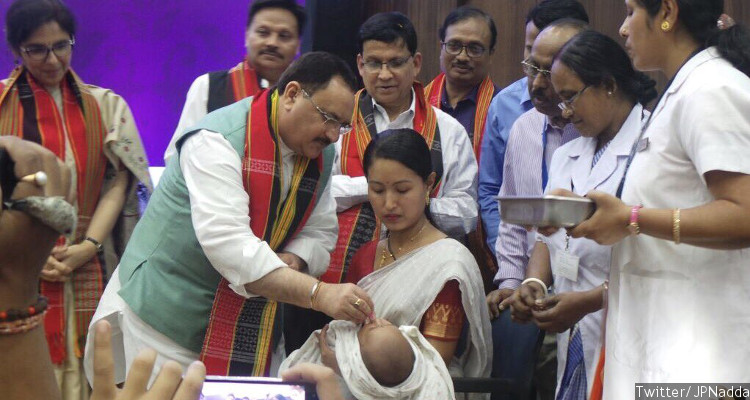Health Minister’s Claim That India Reduced Infant, Maternal Deaths Faster Than Other Countries False

“IMR and MMR are declining at a faster rate in India than in other parts of the world,” union minister for health and family welfare JP Nadda said on February 18, 2017, during a visit to Tripura for a vaccination drive. This was tweeted by Vaccinate4Life, an initiative of the ministry of health & family welfare.
IMR and MMR are declining at a faster rate in India than in other parts of the world. - @JPNadda @MoHFW_INDIA
— Vaccinate4Life (@Vaccinate4Life) 18 February 2017
IMR is infant mortality rate or the number of infant deaths per 1,000 live births. MMR is maternal mortality ratio or the number of maternal deaths per 100,000 live births.
We fact-checked the minister’s claim, and found it to be false--many countries had reduced IMR and MMR at a faster rate than India when compared over a period of 16 years from 2000 to 2015.
India reduced maternal mortality by 53%
India’s MMR was 174 in 2015, a decrease of 53% from 374 in 2000, according to World Bank data.
The African country of Rwanda, which had an MMR of 1,020 in 2000, reduced it by 71% to 290 in 2015.
Bangladesh reduced MMR by 56%, Afghanistan by 64% and Liberia by 58% over the period, faster than India.
India’s decline in MMR equalled the South Asia region, which reduced its average MMR by 53% in 16 years.
Source: World Bank
Infant deaths down 42% over 16 years
India’s IMR was 38 in 2015, a decrease of 42% from 66 in 2000, according to World Bank estimates.
Among India’s neighbours, Maldives had the fastest decline of 81% from 36 in 2000 to 7 in 2015. Rwanda’s IMR declined by 72%, Uganda by 58%, Nepal by 52% and Iran by 55%.
The government’s claim of reducing maternal and neonatal deaths is misleading, and the year-on-year decline in neonatal and under-five deaths over the past five years was the lowest in 2014-15, FactChecker reported in December 2016.
Source: World Bank
(Saha is an MA Gender and Development student at Institute of Development Studies, University of Sussex.)


